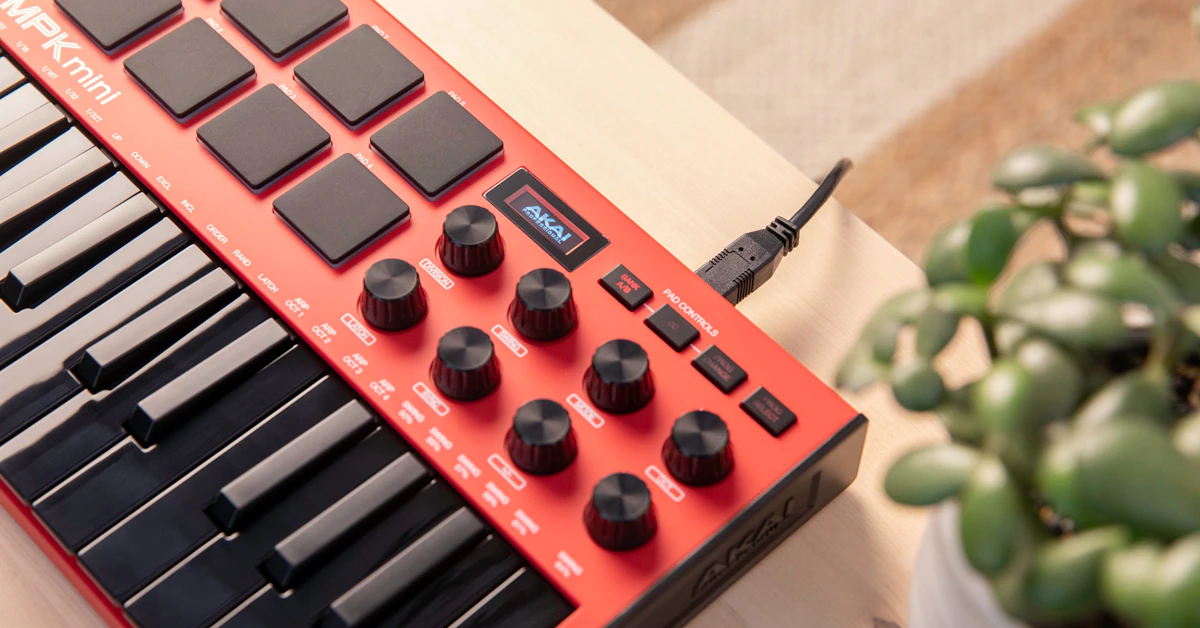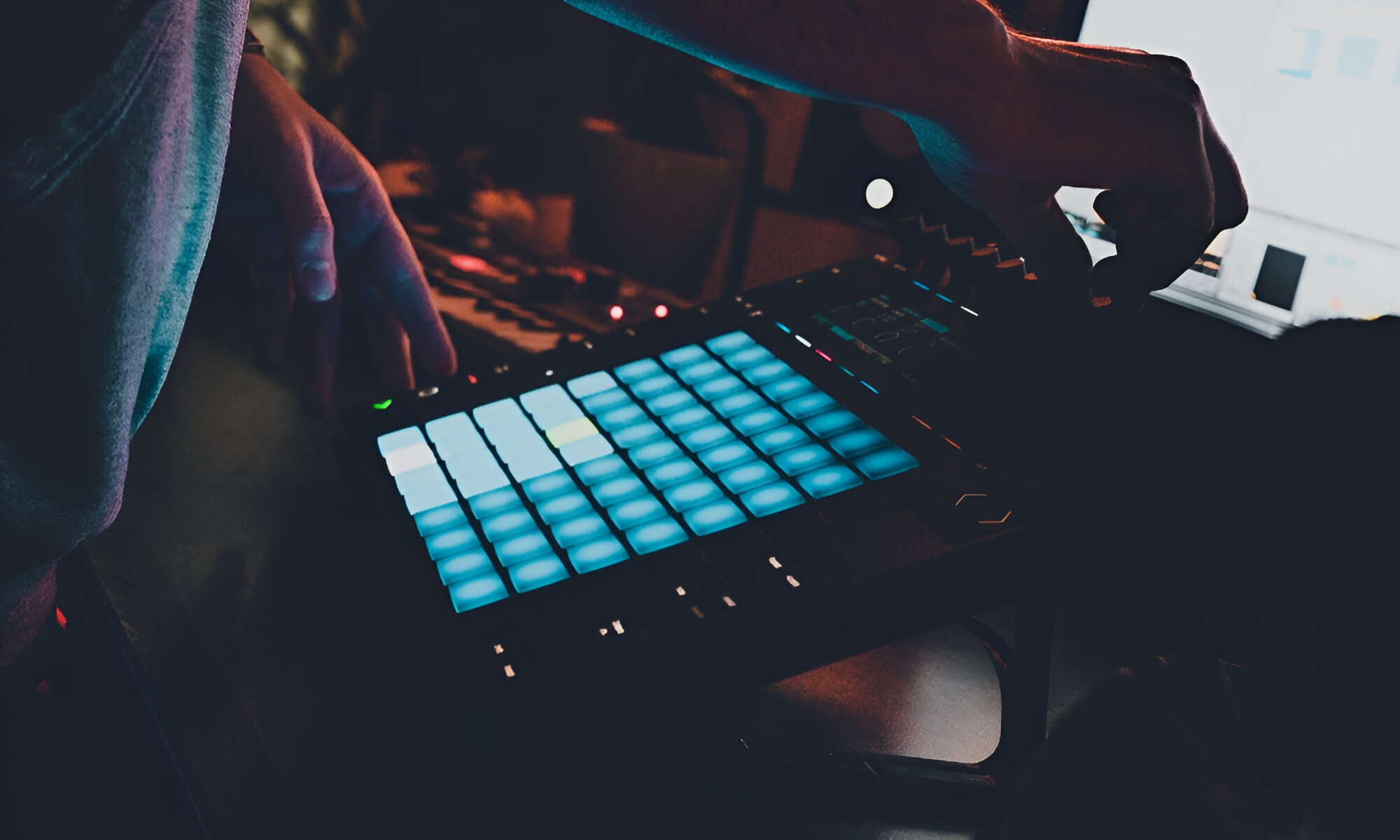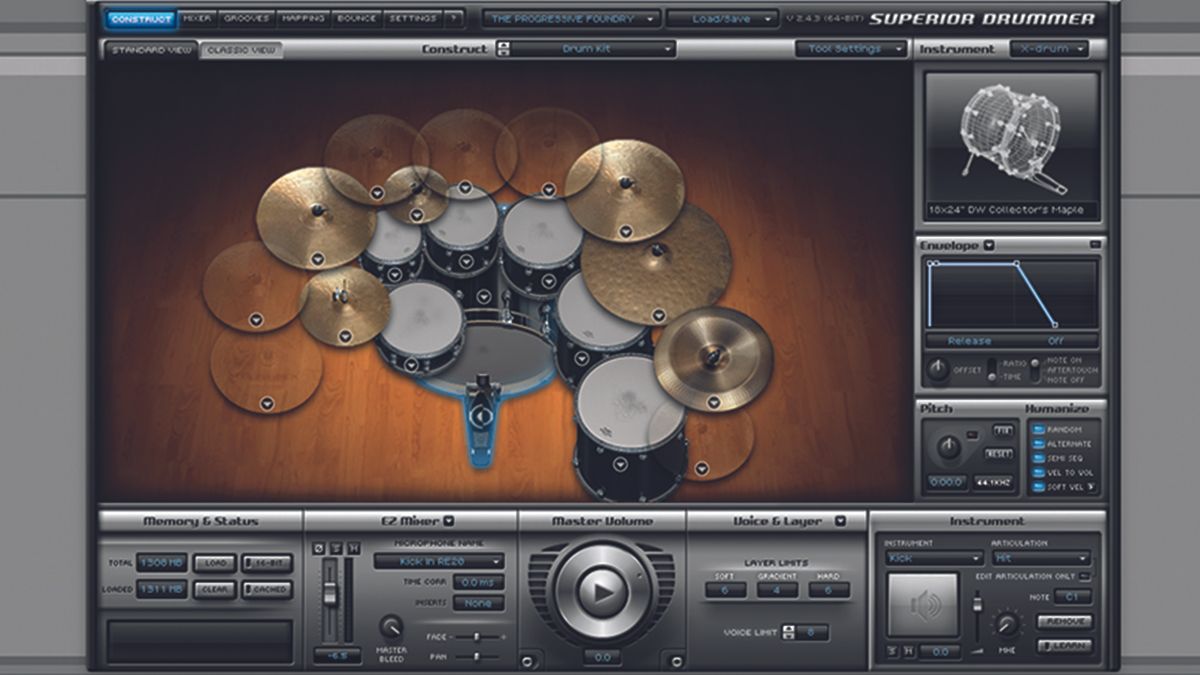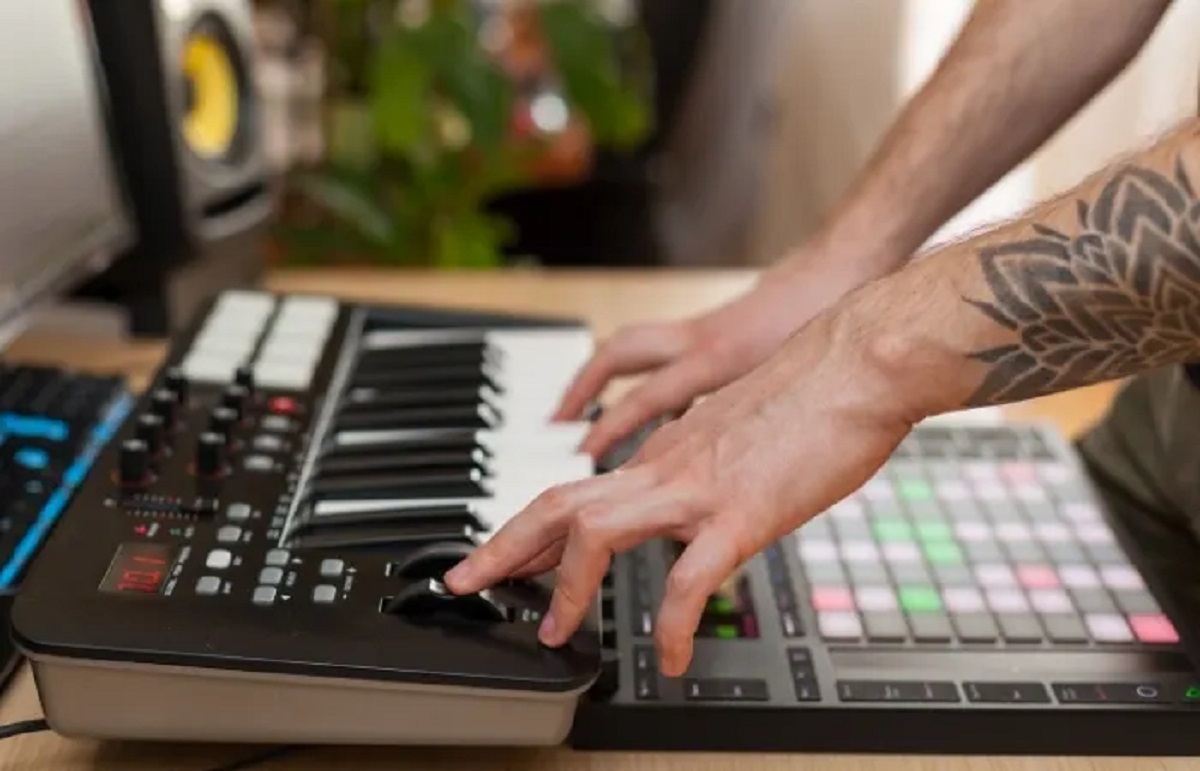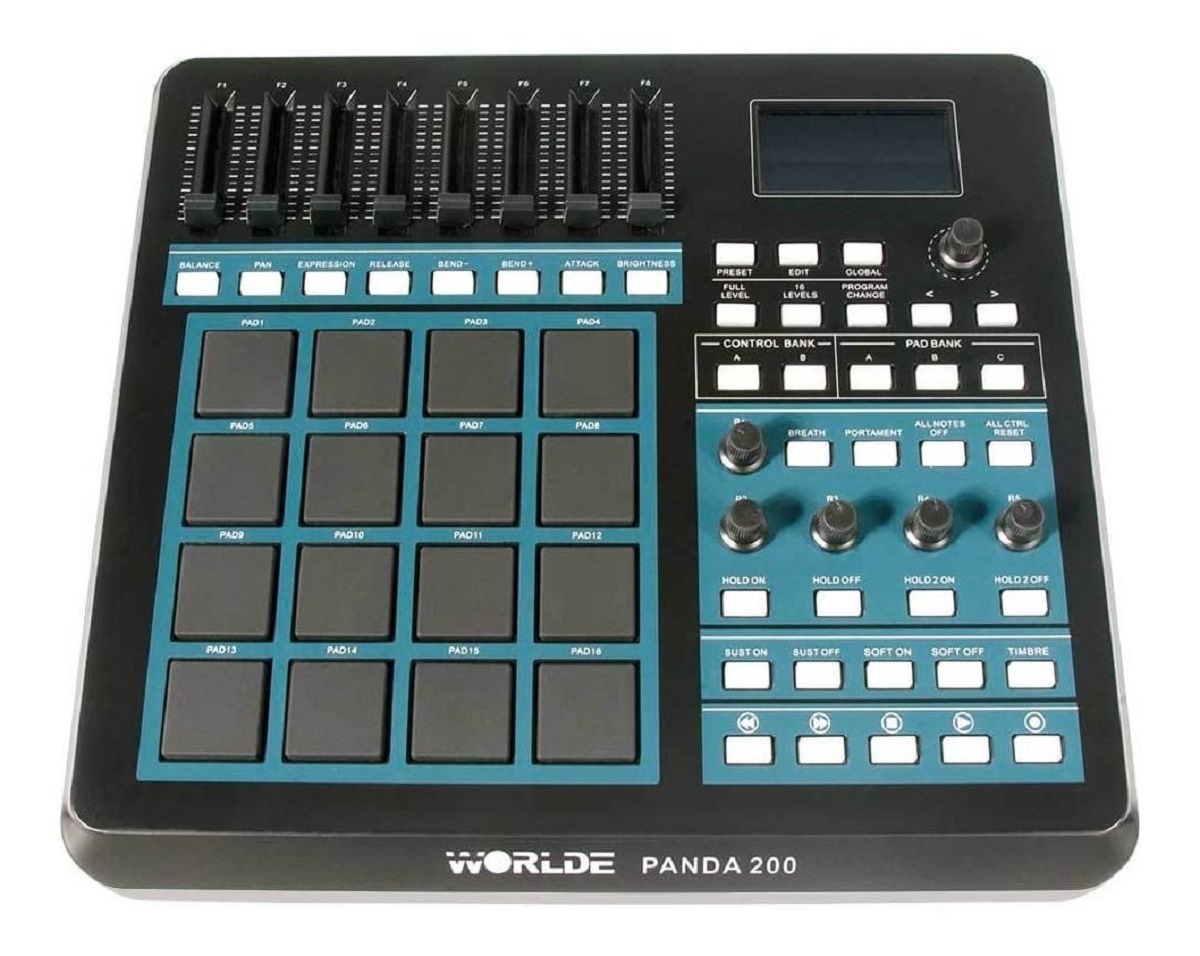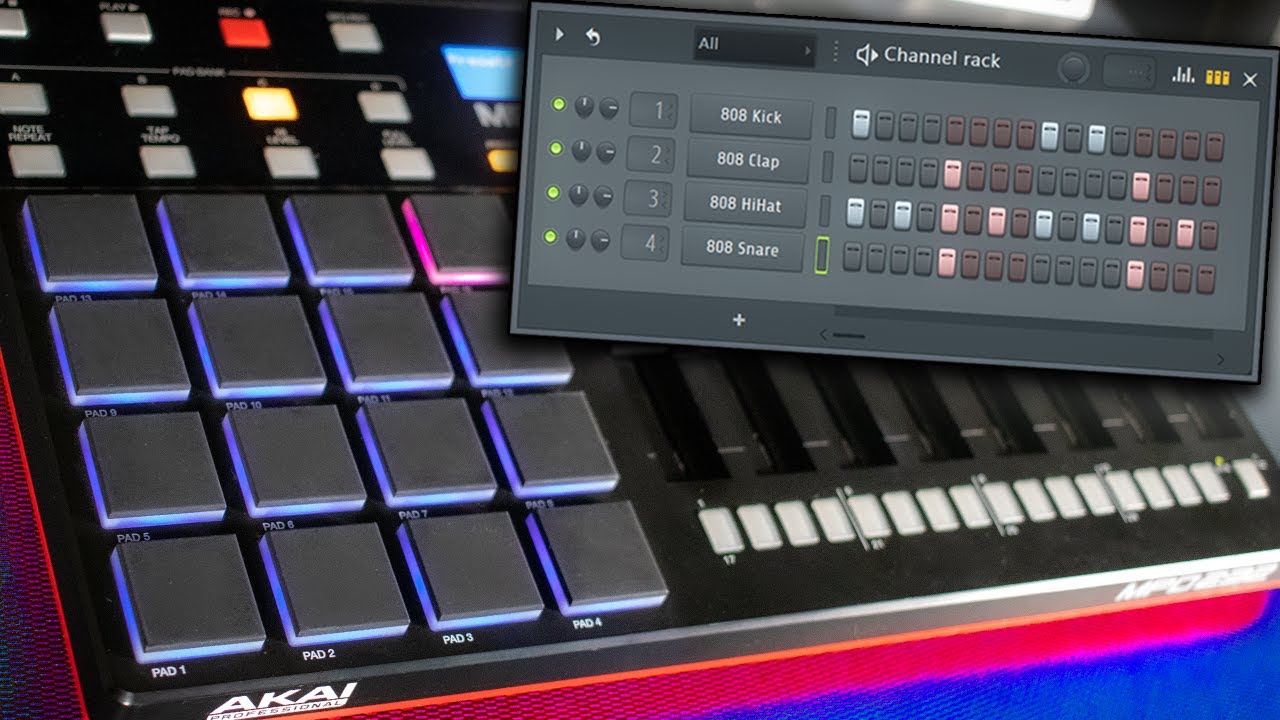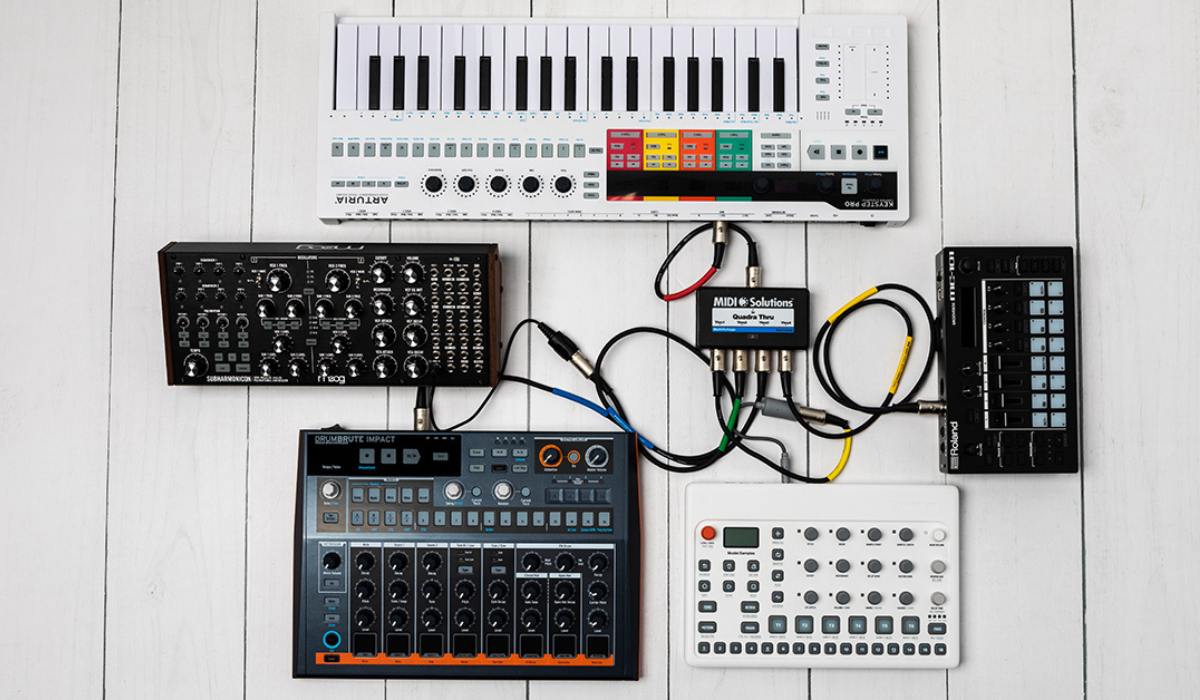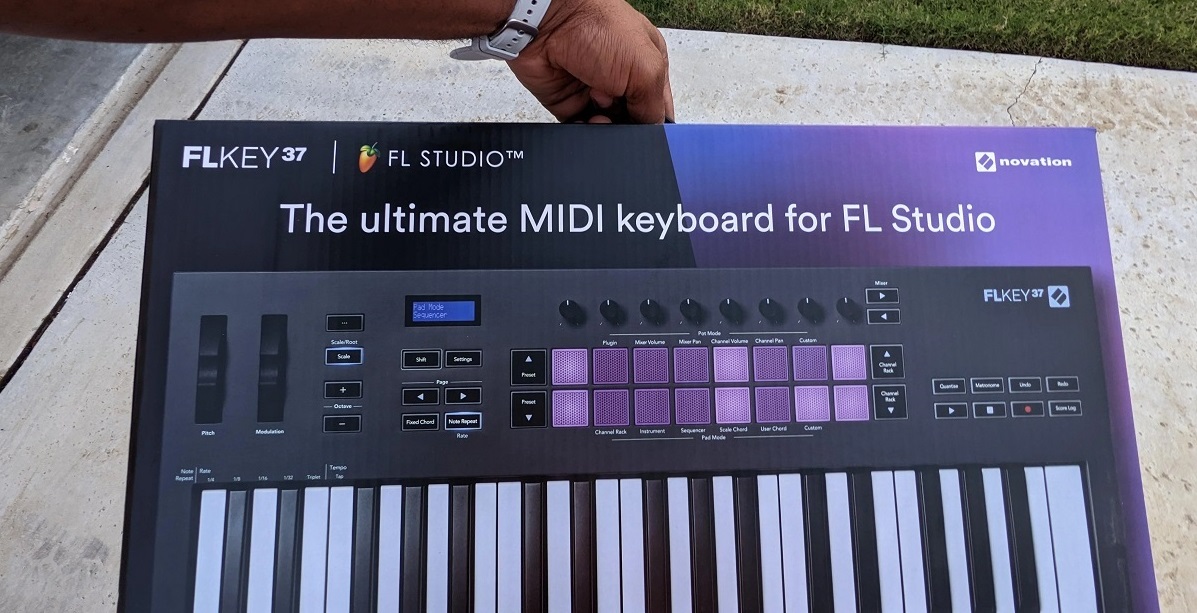Introduction
Welcome to the exciting world of drumming on a MIDI keyboard! While traditional drum kits are undeniably awesome, playing drums on a MIDI keyboard offers a unique and versatile experience. Whether you’re a beginner or an experienced musician looking to explore new horizons, mastering the art of drumming on a MIDI keyboard can open up a world of creative possibilities.
By leveraging the power of technology, you can emulate the sounds of various percussion instruments, experiment with different rhythms, and seamlessly integrate drumming into your music production process. With the right techniques and a dash of creativity, you can unleash your inner rhythm and become a proficient virtual drummer.
In this guide, we’ll delve into the essential steps and techniques for playing drums on a MIDI keyboard. From setting up your equipment to honing your drumming skills, you’ll gain valuable insights that will propel your drumming journey to new heights. So, grab your MIDI keyboard, buckle up, and get ready to embark on an exhilarating rhythmic adventure!
Getting the Right Equipment
Before diving into the world of drumming on a MIDI keyboard, it’s crucial to ensure that you have the appropriate equipment to kickstart your rhythmic journey. Here’s what you’ll need:
- MIDI Keyboard: The centerpiece of your setup is, of course, a MIDI keyboard. Opt for a model with responsive drum pads or assignable pads, as they will serve as your virtual drum kit. Additionally, having a full-sized keyboard with velocity-sensitive keys can enhance your playing experience.
- Computer or Mobile Device: Since MIDI keyboards rely on software to generate sounds, you’ll need a computer or mobile device to host a digital audio workstation (DAW) or a standalone drum plugin. Ensure that your device meets the system requirements for the software you plan to use.
- Drum Software or Plugins: Choose a high-quality drum software or plugin that offers a diverse range of drum sounds and customizable features. Look for options that allow you to map drum sounds to specific keys on your MIDI keyboard, providing flexibility and control over your virtual drum kit.
- Audio Interface (Optional): If you aim to achieve professional-grade audio quality, consider investing in an audio interface. This device enables you to connect your MIDI keyboard to your computer or mobile device while maintaining pristine sound fidelity.
- Comfortable Seating and Workspace: Creating a comfortable and ergonomic environment for your drumming sessions is essential. Choose a suitable chair and ensure that your workspace allows for unrestricted movement and easy access to your MIDI keyboard and computer.
By assembling the right combination of equipment, you’ll lay a solid foundation for your drumming endeavors. With these tools at your disposal, you’ll be well-equipped to unleash your creativity and dive into the captivating world of drumming on a MIDI keyboard.
Setting Up Your MIDI Keyboard
Once you have the necessary equipment in place, it’s time to set up your MIDI keyboard for an optimal drumming experience. Follow these steps to ensure a seamless and efficient setup:
- Connect Your MIDI Keyboard: Begin by connecting your MIDI keyboard to your computer or mobile device using a USB cable or MIDI interface, depending on the connectivity options available. Ensure that the connection is secure to avoid any interruptions during your drumming sessions.
- Install and Configure Drum Software: If you haven’t already done so, install your chosen drum software or plugin on your computer or mobile device. Once installed, configure the software to recognize and respond to input from your MIDI keyboard. This may involve mapping drum sounds to specific keys or pads on your MIDI keyboard, allowing for intuitive and expressive drumming.
- Adjust MIDI Settings: Access the MIDI settings within your software or DAW to verify that your MIDI keyboard is properly recognized and assigned as the input device. Calibrate the velocity sensitivity of the keys or pads to ensure that your drumming dynamics are accurately translated into the virtual drum sounds.
- Position Your MIDI Keyboard: Place your MIDI keyboard in a comfortable and accessible position within your workspace. Ensure that the keyboard is at a suitable height and angle for effortless playing, allowing you to maintain a natural and relaxed posture during your drumming sessions.
- Test Your Setup: Before diving into full-fledged drumming, perform a quick test to ensure that your MIDI keyboard is effectively triggering the desired drum sounds in your software. Verify that the responsiveness and sensitivity of the keys or pads align with your playing style.
By meticulously setting up your MIDI keyboard, you’ll establish a solid foundation for immersive and expressive drumming sessions. A well-configured setup will empower you to seamlessly translate your rhythmic ideas into captivating drum performances, propelling your musical creativity to new heights.
Understanding Drum Mapping
Drum mapping is a fundamental aspect of playing drums on a MIDI keyboard, as it dictates how different drum sounds are triggered by specific keys or pads. By grasping the concept of drum mapping, you’ll gain a deeper understanding of how to navigate and utilize your virtual drum kit effectively. Here’s a breakdown of key elements related to drum mapping:
- Key-to-Sound Assignments: In the context of drum mapping, each key or pad on your MIDI keyboard is assigned to trigger a specific drum sound. This mapping allows you to emulate the layout of a traditional drum kit, with each key representing a distinct percussion instrument such as kick, snare, hi-hat, and cymbals.
- Velocity Layers: Drum mapping often incorporates velocity layers, which correspond to the intensity of a drum sound based on how forcefully a key is struck. This dynamic feature adds realism to your drum performances, as softer strikes produce gentler sounds, while harder hits yield more forceful and resonant tones.
- Customization Options: Many drum software and plugins offer customization options for drum mapping, allowing you to tailor the layout and assignments to align with your preferences and playing style. This flexibility enables you to create a personalized drum mapping configuration that optimizes your drumming experience.
- Percussion Variation: With an understanding of drum mapping, you can explore the diverse array of percussion sounds available in your drum software. Experiment with different drum kits, sound libraries, and effects to expand your sonic palette and infuse your drumming with richness and character.
By familiarizing yourself with drum mapping principles, you’ll unlock the potential to craft expressive and authentic drum performances on your MIDI keyboard. This foundational knowledge will empower you to navigate your virtual drum kit with confidence, harnessing the intricacies of drum mapping to breathe life into your rhythmic creations.
Playing Basic Drum Patterns
As you embark on your drumming journey with a MIDI keyboard, mastering basic drum patterns forms the cornerstone of your rhythmic proficiency. By internalizing essential patterns and rhythms, you’ll lay a solid groundwork for creating engaging and cohesive drum performances. Here’s a guide to playing basic drum patterns on your MIDI keyboard:
- Mastering the Kick and Snare: Start by familiarizing yourself with the fundamental kick (bass drum) and snare drum patterns. Assign specific keys or pads on your MIDI keyboard to trigger the kick and snare sounds, and practice playing simple alternating patterns to establish a steady groove.
- Integrating Hi-Hat Patterns: Incorporate the hi-hat into your drumming repertoire by experimenting with various open and closed hi-hat patterns. Utilize different keys or pads to trigger open and closed hi-hat sounds, and explore the interplay between the hi-hat, kick, and snare to craft rhythmic textures.
- Embracing Dynamics: Focus on infusing your drum patterns with dynamic nuances by varying the intensity of your strikes. Experiment with subtle velocity changes to imbue your playing with expressive dynamics, adding depth and fluidity to your drum performances.
- Exploring Syncopation: Delve into the realm of syncopated rhythms by introducing offbeat accents and unexpected rhythmic placements. Embracing syncopation adds an element of intrigue and complexity to your drum patterns, elevating the overall rhythmic appeal of your performances.
- Building Groove and Flow: As you practice basic drum patterns, focus on developing a sense of groove and flow. Pay attention to the interlocking relationship between the kick, snare, and hi-hat, and strive to create rhythmic patterns that captivate listeners and propel the music forward.
By honing your proficiency in playing basic drum patterns, you’ll fortify your rhythmic foundation and cultivate the skills necessary to construct compelling and engaging drum performances. Embrace the rhythmic intricacies of each pattern, and let your creativity flourish as you breathe life into your virtual drum kit with finesse and flair.
Adding Fills and Variations
Injecting fills and variations into your drumming repertoire elevates the dynamism and expressiveness of your performances, infusing them with moments of flair and creativity. As you explore the realm of drumming on a MIDI keyboard, incorporating fills and variations enriches your rhythmic canvas, allowing you to craft captivating and diverse drum sequences. Here’s how you can integrate fills and variations into your drumming:
- Dynamic Drum Fills: Experiment with dynamic drum fills that punctuate transitions within your drum patterns. Utilize a combination of drum sounds and rhythmic accents to create impactful fills that seamlessly lead into the next section of your performance, adding excitement and momentum.
- Rhythmic Variations: Introduce rhythmic variations to your drum patterns by altering the timing, placement, and duration of individual drum hits. Embrace syncopated rhythms, polyrhythms, and unconventional patterns to inject intrigue and unpredictability into your drum performances.
- Exploring Drum Rolls: Dive into the realm of drum rolls, utilizing rapid and successive hits to build tension and anticipation. Experiment with varying velocities and articulations to craft nuanced drum rolls that amplify the energy and intensity of your drumming.
- Emotive Expressions: Infuse your fills and variations with emotive expressions, leveraging the velocity sensitivity of your MIDI keyboard to convey a range of emotions through your drumming. Dynamically modulate your playing to evoke subtlety, power, and everything in between, adding depth and character to your performances.
- Seamless Integration: Seamlessly integrate fills and variations into your drum patterns, ensuring that they complement the overarching musical context. Aim to create organic transitions between regular patterns and embellished fills, maintaining a cohesive and engaging rhythmic narrative.
By embracing fills and variations, you’ll infuse your drum performances with an expressive and dynamic edge, captivating listeners with the artful interplay of rhythmic embellishments. Embrace experimentation and creativity as you adorn your drum patterns with captivating fills and engaging variations, inviting your audience on an exhilarating rhythmic journey.
Experimenting with Different Drum Sounds
Exploring a diverse range of drum sounds on your MIDI keyboard opens up a world of sonic possibilities, allowing you to sculpt unique and compelling rhythmic textures. By immersing yourself in the realm of varied drum sounds, you can expand your sonic palette and infuse your drumming with richness and character. Here’s how you can embark on a sonic exploration of different drum sounds:
- Drum Kit Selection: Dive into your drum software or plugin’s library of drum kits, each offering a distinct collection of percussion sounds. Experiment with acoustic, electronic, hybrid, and specialty drum kits to discover the sonic characteristics that resonate with your musical vision.
- Percussion Diversity: Explore an array of percussion instruments beyond traditional drums, including congas, bongos, tambourines, shakers, and more. Incorporating diverse percussion sounds into your drumming adds depth and dimension to your rhythmic arrangements, offering a rich tapestry of sonic textures.
- Sound Design Flexibility: Leverage the sound design capabilities of your drum software to customize and sculpt drum sounds according to your creative preferences. Adjust parameters such as pitch, decay, resonance, and effects to tailor each drum sound to suit the mood and atmosphere of your compositions.
- Layering and Blending: Experiment with layering multiple drum sounds to create hybrid and composite drum textures. Blend acoustic and electronic elements, fuse traditional and experimental sounds, and sculpt intricate sonic amalgamations that defy conventional categorizations.
- Expressive Articulations: Embrace the expressive articulations available within your drum software, such as flam, drag, roll, and ghost notes. Infuse your drumming with nuanced articulations that breathe life and authenticity into your performances, capturing the subtleties of human drumming.
By delving into the vast spectrum of drum sounds, you’ll uncover a treasure trove of sonic inspirations that can elevate your drumming to new heights. Embrace the sonic diversity at your fingertips, and let your rhythmic explorations be guided by the myriad textures, timbres, and tonalities that define the captivating world of drum sounds.
Tips for Improving Your Drumming Skills
Enhancing your drumming skills on a MIDI keyboard involves a combination of practice, technique refinement, and creative exploration. By incorporating the following tips into your drumming regimen, you can elevate your proficiency and unlock new levels of rhythmic prowess:
- Consistent Practice: Dedicate regular time to practice and hone your drumming skills. Consistency is key to reinforcing muscle memory, improving coordination, and internalizing rhythmic patterns.
- Focus on Dynamics: Pay attention to the dynamic range of your playing, varying the intensity and articulation of your strikes to imbue your performances with expressive nuances.
- Rhythmic Precision: Develop a keen sense of rhythmic precision by practicing with a metronome or drum loops. Cultivate a tight sense of timing and groove to anchor your drumming with unwavering rhythmic accuracy.
- Exploration of Styles: Explore a diverse range of musical styles and genres to expand your rhythmic vocabulary. Embrace the rhythmic nuances of various genres, from jazz and funk to electronic and world music, to broaden your rhythmic horizons.
- Translating Emotion: Infuse your drumming with emotion and musicality, translating the mood and feel of a composition through your rhythmic expressions. Connect with the musical narrative and convey its essence through your drum performances.
- Analytical Listening: Engage in analytical listening to dissect and understand the drumming styles of accomplished musicians. Study the nuances of their playing, dissect complex patterns, and draw inspiration from their techniques.
- Collaborative Jamming: Engage in collaborative jamming sessions with other musicians to develop your ability to groove with a band and adapt to dynamic musical interactions.
- Embrace Feedback: Seek constructive feedback from peers, mentors, or online communities to gain valuable insights into refining your drumming technique and musical expression.
- Performance Confidence: Cultivate confidence in your drumming abilities by performing in front of an audience, whether in live settings or through virtual platforms. Embrace the experience of sharing your rhythmic artistry with others.
By integrating these tips into your drumming practice, you’ll embark on a transformative journey of skill refinement and artistic growth. Embrace each tip as a stepping stone toward unlocking your full rhythmic potential, and revel in the joy of evolving into a versatile and expressive virtual drummer.
Conclusion
Congratulations on delving into the captivating realm of drumming on a MIDI keyboard! Throughout this guide, you’ve embarked on a rhythmic odyssey, from setting up your equipment to honing your drumming skills and exploring the boundless sonic landscapes of virtual drumming. By embracing the fusion of technology and creativity, you’ve unlocked the potential to craft compelling and expressive drum performances that resonate with your musical vision.
As you continue your journey, remember that mastery is a continuous evolution shaped by dedication, exploration, and a relentless pursuit of rhythmic excellence. Each keystroke on your MIDI keyboard is an opportunity to infuse your drumming with emotion, groove, and artistic flair, transcending the confines of traditional percussion instruments.
Embrace the rhythmic diversity at your fingertips, experiment with an array of drum sounds, and refine your skills through consistent practice and creative exploration. Whether you’re crafting infectious grooves, dynamic fills, or intricate rhythms, let your rhythmic expressions flow freely, guided by the boundless possibilities of virtual drumming.
With each beat, you’re weaving a rhythmic tapestry that reflects your musical identity and resonates with listeners. So, seize the moment, drum to the pulse of your creativity, and revel in the exhilarating journey of becoming a proficient and expressive virtual drummer on your MIDI keyboard.
Let the rhythm guide you, the keys be your canvas, and your passion be the driving force behind your rhythmic odyssey. Embrace the rhythmic diversity at your fingertips, experiment with an array of drum sounds, and refine your skills through consistent practice and creative exploration.







